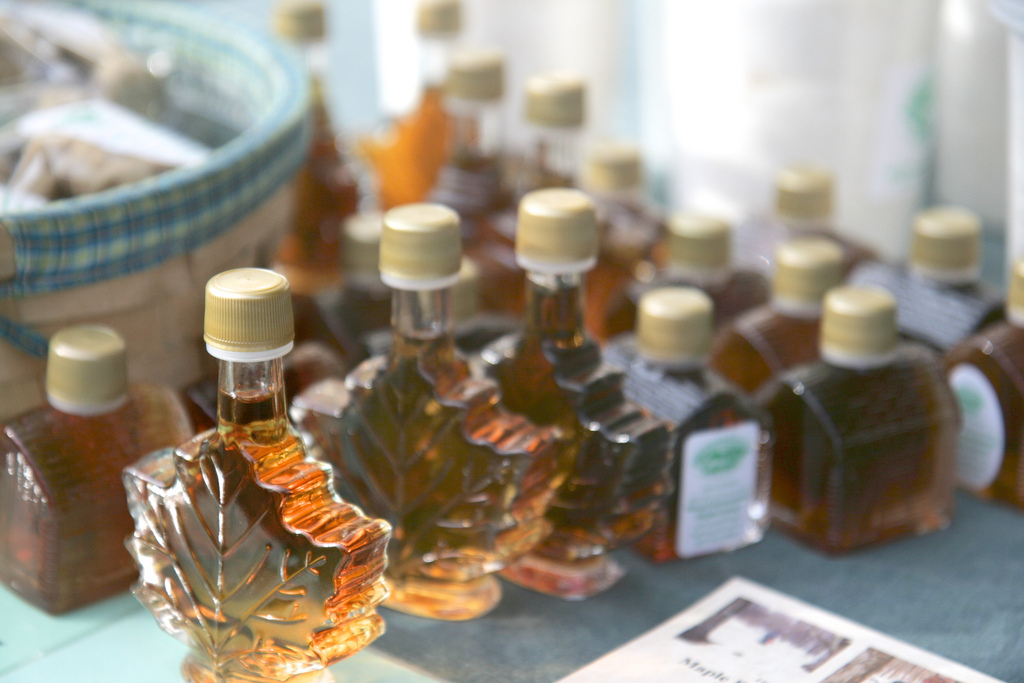
Maple syrup for sale at the Union Square Greenmarket. Photo © Alexis Lamster, licensed Creative Commons Attribution.
A handful of Hudson River Valley farmers continue to produce real maple syrup the old-fashioned way. They drill holes in hard maple trees, collect the sap that drips out, and boil excess water away in a wood-fired evaporator. The end result is Grade A maple syrup that turns a quick breakfast into a gourmet feast.
Once an off-season income supplement for dairy farms, maple sugarhouses today draw late-season skiers and other visitors for a lesson in culinary science. The process begins in late February or early March, when temperatures climb into the 40s during the day and return to the low 20s at night. For four to six weeks, the fluctuating temperatures move tree sap from roots to leaves and back again, allowing the farmer to catch some of the flow without harming the tree. The most authentic sugarhouses hang aluminum buckets on each trunk to collect the sap, although larger operations have upgraded to plastic pipes in order to speed up the process.
Straight out of the tree, sap runs clear, with just a hint of sweetness. Back in the sugarhouse, the farmer boils the frothy liquid in the long flutes of a steel evaporator, staying up all night long when necessary to finish the day’s harvest. An instrument called a hydrometer measures the specific gravity of the liquid and tells the boiler when the sap has officially reached the distinctive amber color and thickness we associate with the real stuff. It’s a precise and labor-intensive operation—for every 40 gallons of raw sap, a sugarhouse will produce approximately 1 gallon of syrup.
Excerpted from the Fourth Edition of Moon Hudson Valley & the Catskills.